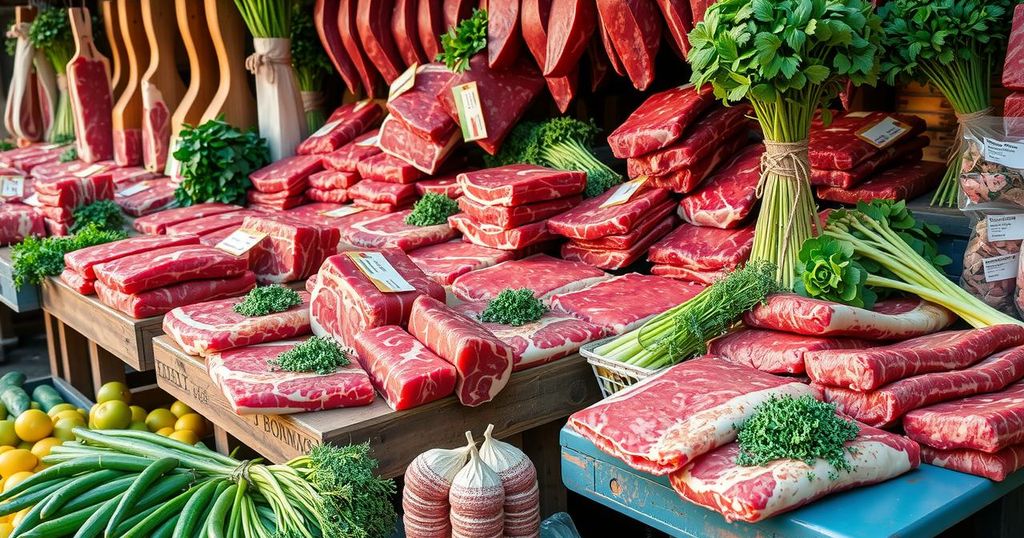Analysis of Rising Meat Prices in Uzbekistan Compared to CIS Countries

Meat prices in Uzbekistan are higher than in CIS countries, with beef at 8.1 US dollars per kg. Contributing factors include supply chain issues, high feed costs, production expenses, and substantial local demand. While global prices have increased, the country must address these economic factors to enhance food security.
Recent data compiled by the international service Numbeo indicates that meat prices in Uzbekistan are notably higher than in other member countries of the CIS. Specifically, the price for 1 kg of beef in Uzbekistan stands at approximately 8.1 US dollars, surpassing prices in neighboring countries such as Kazakhstan, Russia, Kyrgyzstan, and Tajikistan. This discrepancy may be attributed to fluctuations in the food market and ongoing economic developments within Uzbekistan.
Globally, the cost of beef varies significantly. Switzerland holds the record for the highest price, with 1 kg costing around 44.3 US dollars. Other countries with high beef prices include Iceland and South Korea, where the rates are approximately 38.7 and 28 US dollars, respectively. Conversely, the most affordable beef can be found in Pakistan ($4.04), Nigeria ($4.50), and Ghana ($4.78). In the CIS region, Uzbekistan’s beef prices are outmatched by Kazakhstan, where the price ranges from $6 to $7, and Russia, where it is about $7. The price differences can be explained by market competition and both import and domestic production factors.
Several factors contribute to the elevated meat prices in Uzbekistan: 1. Supply Chain Issues – Transportation expenses significantly impact the cost of delivering meat to the market. 2. Rising Feed Costs – The increasing cost of livestock feed escalates expenses for farmers. 3. Production Costs – High labor and production costs at livestock farms contribute to overall price increases. 4. Import Restrictions and Demand – Strong demand for meat within Uzbekistan raises market prices further.
On a global scale, meat prices have surged by approximately 18% over the past year, with Uzbekistan experiencing a rise of around 14.4%. Specifically, the price of bone-in beef has grown by 18.5%, while mutton has risen by 19.4%. Meanwhile, the cost of poultry meat has seen a slight decline, which may influence consumer choices.
With rising meat prices adversely affecting the purchasing power of residents, many individuals are compelled to seek cheaper alternatives. The shift towards poultry or other substitute products has become more prevalent. Ultimately, the elevated meat prices in Uzbekistan are influenced by various economic factors and the balance of supply and demand. To bolster food security, it is essential to focus on enhancing the livestock sector, addressing feed supply shortages, and improving import processes.
In summary, meat prices in Uzbekistan are considerably higher than those in other CIS nations, impacted by several key economic factors. Increased production, transportation costs, feed prices, and high demand have collectively resulted in this inflation. As global meat prices continue to rise, it is imperative for Uzbekistan to implement strategies that address these challenges to ensure food security and affordability for its citizens.
Original Source: zamin.uz








